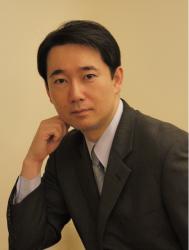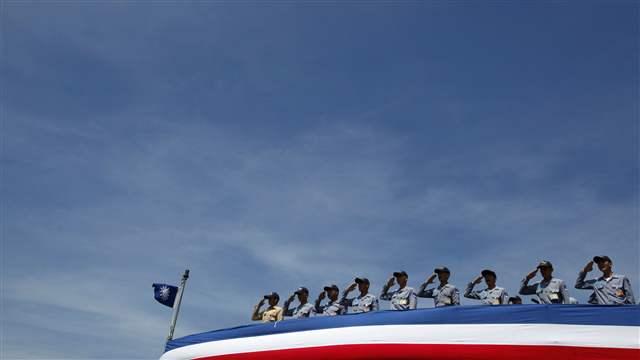Seeking to provide a clear and effective blueprint for Taiwan’s national security, in May 2011 President Ma Ying-jeou enunciated “three lines of defense” through which Taiwan would seek to enhance its international status and security in the face of a rising mainland China. This strategy emphasizes an ambitious approach to keeping Taiwan safe. Two of the three legs have been implemented with some success, but one of the lines has been obviously deficient so far.
The first line of defense is the institutionalization of cross-Taiwan Strait rapprochement, to enable recent improvements to withstand potential future difficulties. This institutionalization is based on the current functional agreements and memoranda of understanding (MOUs) signed between Taiwan and mainland China.[1] The second line of defense is the utilization of Taiwan’s geographic location, infrastructure, and democracy to interact with and make concrete contributions to the world, hoping for an increase in Taiwan’s economic performance and humanitarian aid, the latter of which looks at international development that can establish a place for Taiwan on the moral high ground of international relations.
These first two lines of defense appear to be in good shape, although portions of the Taiwan polity may disagree with parts of the plan itself, or progress in achieving some of its goals, or both. The Ma administration is aware of this and, generally speaking, has considered the domestic-international nexus and endeavored to find an array of solutions for such conflicts. In the past five years, Taiwan and mainland China have signed 18 agreements, including the most prominent one – the Economic Cooperation Framework Agreement (ECFA) – and two MOUs. The number of direct flights between Taiwan and mainland China each week has reached 616, and in 2012 there were 2,580,000 visits by mainland Chinese tourists to Taiwan. Taiwan’s economic performance is improving – the predicted economic growth rate for 2013 is above three percent, and the very first economic cooperation agreements with major Asia Pacific trading partners, i.e., Singapore and New Zealand, are close to completion. In addition, the Ma administration has abandoned the “checkbook diplomacy” method of attracting diplomatic partners and has joined the international mainstream by abiding by the 2005 “Paris Declaration on Aid Effectiveness” and carrying out Taiwan’s foreign aid programs with the participation and assistance of its vibrant civil society.
In comparison with the first two lines of defense, the third line of defense – “aligning Taiwan’s defense with diplomacy” – seems to only have some general guidelines but few detailed and deliberate action plans. President Ma’s priorities for constructing this line of defense include building up Taiwan’s credibility and trust with its allies, the United States in particular, and enhancing Taiwan’s strong determination to defend itself. President Ma firmly believes that it is of political and strategic importance for Taiwan to continue to acquire defensive articles with the appropriate quality and quantity from the United States. The promotion of Taiwan’s soft power is also key to the success of this strategy. “Complementary to our defense capability,” President Ma has said, “[are] Taiwan’s democratic values, rule of law, and an advanced civil society, which could make Taiwan an indispensable reference for socio-economic development in the Chinese mainland.” While the outlines of this third line of defense are visible, it is evident that Taiwan has not brought the different strands of this idea together to substantially connect its national defense and diplomacy.
In order to effectively implement this third line of defense and really align its defense with diplomacy, Taiwan must rethink its practices for interagency collaboration and make some tangible action plans.
The paragraphs that follow will focus on the issue of collaboration between the Ministry of National Defense (MND) and the Ministry of Foreign Affairs (MOFA), which is substantially implied in President Ma’s design. For a preliminary understanding of how to achieve the third line of defense through interagency collaboration, the rationales, structures, and approaches will be discussed in brief.
Rationales for MND-MOFA Collaboration
First, with regard to the rationales, as introduced earlier, aligning defense with diplomacy to make good use of both hard power and soft power for national security is of strategic significance for Taiwan. This depends partially on interagency collaboration and has much to do with two executive agencies in the Executive Yuan, i.e., MND and MOFA.[2]
A strong rationale for interagency collaboration comes from the overlapping missions of MND and MOFA. MND’s basic objectives are “preventing war,” “defending the homeland,” and “countering terrorism and responding to contingencies.” MOFA is responsible for cultivating good neighborliness with other state and non-state actors and ensuring a friendly environment for Taiwan’s preservation and sustainable development “in a spirit of independence and initiative and on the basis of the principles of equality and reciprocity.” MND’s objective of preventing war and MOFA’s goal of befriending other state and non-state actors and ensuring a favorable external environment are not incompatible. Maintaining an appropriate self-defense capability while preventing war in a diplomatic way is a common-sense objective for Taiwan. By the same token, in order to secure the third line of defense, both MND and MOFA should work together to fulfill their missions in common.
Then, a critical question that must be asked is: Have such rationales been recognized completely, or at least widely, by both MND and MOFA? Maybe MND’s and MOFA’s leaderships and most of their staffs have perceived and accepted the request of President Ma, but the extent to which this request has been implemented in practice remains uncertain. This uncertainty arises not from “bureaucratic resistance” to change, but to the ways in which Taiwan’s bureaucratic system operates.
It is understandable that repertoire-bound bureaucracies with existing routines are both facilitators for and barriers to the pursuit of government policy. In the case of Taiwan, due to insufficient top-down “pressure,” the repertoires and routines of bureaucracies seem to be barriers to the realization of the third defense line. Without breaking the boundaries set by these repertoires and routines, MND and MOFA will not have true opportunities to explore the commonalities of their respective key missions. Furthermore, it is possible that bureaucracies have their own “turfs” and might lack adequate communication and exchanges essential for coordinating complicated missions. It is also possible that their executives often compete with one another in order to gain influence on national policies. Bureaucrats may play constructive roles in breaking down these barriers, but high-level political appointees’ personal characters and awareness of interagency collaboration and coordination could be more effective in facilitating better collaboration.
In order to secure the third line of defense, an understanding and sense of the need for interagency collaboration, the presence of initiative, and the cultivation of working relationships will strengthen anemic interagency communication and cooperation between MND and MOFA ― but only to a certain degree. What Taiwan really needs at this time is stronger initiative and persistent fostering of cross-agency interactions that can facilitate the goal of aligning defense with diplomacy. This can only come from above.
Structures of MND and MOFA
Second, examining the structures of MND and MOFA, it is apparent that Taiwan is not ready for real interagency collaboration.
MND’s organizational structure demonstrates the sporadic need to deal with diplomacy and international affairs. The units of MND that have more to do with diplomacy and international affairs may include the Department of Strategic Planning, the Department of Integrated Assessment, the Office of Defense Procurement, the Office of the Deputy Chief of Intelligence, and the Bureau of Military Intelligence. MND has military attachés or equivalents in most of Taiwan’s overseas missions where there is a practical need for military diplomacy or intelligence exchange. MND has also maintained a number of exchange programs aimed at military diplomacy, realized through activities such as symposiums on regional security and defense affairs and personnel exchanges with many diplomatic and non-diplomatic allies. In principle, by nature, and by training these units are more concerned with military affairs than diplomatic ones.
MOFA’s organizational structure is geared almost solely toward diplomacy and international affairs; only its Department of Policy Planning has a 2-to-3-person division dealing with “strategic security” affairs, broadly defined. Although all of its geographic departments have officials responsible for collaborating with MND for military diplomacy programs, this kind of work has been conducted on an ad hoc basis. Better and consistent coordination within both MOFA and MND is required. The work conducted by MOFA’s Department of North American Affairs seems relatively more effective and has drawn the most attention because this department is the major unit in MOFA in charge of Taiwan-United States relations, including arms sales, but this is not representative of the overall level of interagency collaboration between MND and MOFA.
Many clues indicate that, except at the top leadership level, the exchange and sharing of information between MND and MOFA have not been institutionalized satisfactorily. For example, the coordination of strategic communication by MND (synchronizing the military’s messages with its actions to shape domestic and international public opinions) and public diplomacy by MOFA (using public communications media, exchanges, educational-cultural programs, and dealing with an array of state and non-state actors for the purpose of influencing the politics and foreign policies of other governments) appears even weaker. Such coordination is a requirement for dealing with today’s rapidly changing external environment. MND does have a Political Warfare Bureau, but it is militarily and domestically oriented. MOFA set up a Public Diplomacy Coordination Council and a Department of International Information Services after its new structure was determined in 2012, but they are not given enough training, tools, and resources for effective public diplomacy and have few connections with MND. The lack of interagency collaboration further deteriorates the preparedness of these units for the trials associated with strategic communication or public diplomacy.
As neither MND nor MOFA is sufficiently organized and trained to plan, coordinate, and integrate the resources and mechanisms available for the establishment of the third line of defense, at the present time Taiwan is not able to achieve this goal.
Approaches to Enhancement
It is unclear what approaches the Ma administration has undertaken to better align Taiwan’s defense with diplomacy
There may be some “relatively good practices” to improve the “semi-vulnerable” linkage of MND and MOFA. Despite their different natures and despite their diverse expectations and priorities, as mentioned before, MND’s and MOFA’s basic aims and key missions for the enhancement of Taiwan’s national security are not incompatible at all. Officials from both ministries should have an awareness of each other’s differences, respective concerns, and ways of thinking. They should also develop a common language and commit to working toward a common or shared goal.
Three immediately feasible and likely approaches to aligning defense with diplomacy may include the encouragement of officials to engage proactively in an interagency process, the ad hoc arrangement of staffing exchanges between the two Ministries, and joint workshops or training sessions. All of these should be guided by the existing modi operandi regarding information sharing and confidentiality, in conjunction with the revocation of obstructive personnel and accounting laws and regulations. Meanwhile, individuals and agencies involved in interagency collaboration should be assigned clear roles and responsibilities. Generally speaking, for Taiwan, there is a long way to go, but once sustained these approaches will enable MND and MOFA to interact more efficiently.
In the past decade, occasionally, some political appointees in both the Chen Shui-bian and Ma administrations have sought to promote ― either explicitly or implicitly ― a consciousness of the need for more interagency collaboration in the national security field, using some of the measures suggested above. Unfortunately, for the most part these efforts have ceased when the individuals behind them have left office.
Concluding Remarks
It seems that since President Ma took office in May 2008, Taiwan has concentrated predominantly on the first two lines of defense for national security: the institutionalization of cross-Taiwan Strait interactions, and the emphasis on Taiwan’s economic and other soft power advantages to highlight Taiwan as an indispensable partner and responsible stakeholder in the international community. The third line of defense – aligning defense with diplomacy – is also being constructed, but at a very slow pace and with insufficient initiative. Beyond a doubt, United States arms sales to and political support for Taiwan are in the spotlight, and they remain extremely crucial for Taiwan’s national security. Yet, support from the United States is not enough by itself. To really consolidate this defense line, Taiwan must speed up its interagency collaboration now, beginning with MND and MOFA. This is an inexpensive way to improve Taiwan’s national security, but it requires a political investment and resolve from the leadership.
President Ma must know clearly that his national security triad will not function as expected if any of the defense lines is ignored or mismanaged. Nonetheless, it remains to be seen whether the in-depth shaping and adjustment of the third line of defense will take place in the near future, especially as the administration is confronting a series of serious and intricate domestic and external challenges that have troubled the Ma administration for a couple of years. Furthermore, Taiwan’s political calendar, featuring the 7-in-1 local elections in late 2014 and presidential and legislative elections in early 2016, indicates that consolidating the third line of defense may soon become more difficult if President Ma fails to give enough attention to the consolidation program now.
[1] Technically, the parties to the agreements are the Taipei-based Straits Exchange Foundation (SEF) and the Beijing-based Association for Relations across the Taiwan Straits (ARATS), the non-governmental organizations authorized by Taiwan and mainland China, respectively, to manage cross-Taiwan Strait affairs.
[2] In promoting Taiwan’s national security, two major agencies outside the Executive Yuan, the National Security Council (NSC) and the National Security Bureau (NSB) as part of the NSC organ, must also be included in the interagency process. To avoid over-complicating matters in a short space, this essay will exclude discussion of the NSC and NSB, but their roles in enhancing President Ma’s third line of defense are indispensable.



